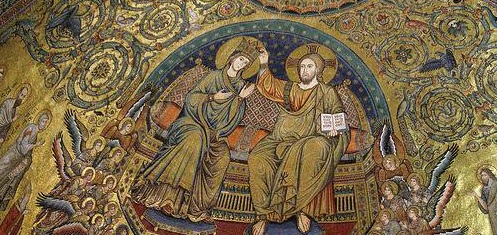MEDIEVAL ART
email: This email address is being protected from spambots. You need JavaScript enabled to view it.
Academic Year 2023/2024
------------------
ACADEMIC YEAR 2021/2022
The development of the city of Rome through the Middle Ages. Christianization and its impact on the urban fabric; the birth of new typologies of sacred buildings; a new visual language in painting and sculpture. All these crucial topics will be studied through the main monuments and works of art in Rome.
The course will be divided in two parts. The first one will be held in class and will include such themes as follows:
1) Features of Late Antique cultures: the concept of “Sub-Antique”.
2) The Portrait of Christ: a main problem in Christian Art.
3) “Sermo brevis”. Structures of discourse in sarcophages and catacomb painting
4) Rome: pope Sixte III and Leon the Great. Santa Maria Maggiore, San Pietro, San Paolo fuori le mura
5) Early Medieval painting in Rome: Santa Maria Antiqua
6) Carolingian Rome
7) Rome and the Reform of the Church
8) The “Cosmati” workshops
9) Rome in the thirteenth century
The second part will include visits to churches and museums; the students will give short presentations about sites, buildings and works of art, in order to learn and speak “in front” of the works. These presentations will be part of the evaluation, together with the final exams.
Bibliography
- Richard Krautheimer, Rome: Profile of a city 312-1308, Princeton U.P. 1980, First part, chapters 1-8.
- Thomas F. Mathews, The clash of Gods: a reinterpretation of Early Christian Art, Princeton U.P. 1993, new ed. 2003, chapters 1, 2, 3.
- Goodson, Caroline J., The Rome of Pope Paschal I : papal power, urban renovation, church rebuilding and relic translation, 817 - 824 , Cambridge [u.a.], Cambridge University Press: 2010.
- Herbert L. Kessler-Johanna Zacharias, Rome 1300. On the path of the pilgrim, Yale University Press 2000.
Articles and essays on specific topics will be suggested during the course.
Assessment/Exams
The knowledge will be tested (not formally) during the courses, by questions and dialogues with the students. Otherwise, the students can choose a topic which they would prepare on bibliography through individual study; and they can present the fruit of this study to the teacher and their colleagues in front of the monument/work of art, during the visits.
The final oral examinations will test the ensemble of acquired knowledge and experiences, the proper vocabulary and the student's argumentative capacity.

ACADEMIC YEAR 2020/2021
The course aims to present the students with the main steps of Medieval Art, sketching the first appearance of Christian art in the frame of Late Antique culture and artistic language and then studying the main monuments of Early Christian art, mainly those in Rome.
It will be divided in two parts. The first one will be held in class and will include such themes as follows:
a Features of Late Antique cultures: the concept of “Sub-Antique”.
b The Portrait of Christ: a main problem in Christian Art.
c “Sermo brevis”. Structures of discourse in sarcophages and catacomb painting
d Birth of Christian narrative in public buildings: the Baptistery at Naples.
e Rome: pope Sixte III and Leon the Great. Santa Maria Maggiore, San Pietro, San Paolo fuori le mura.
The second part will be held in churches and museums of Rome, in front of architectures and art works; an active participation of the students will be required.
Bibliography
- Jas Elsner, Art and the Roman viewer: the transformation of art from the Pagan world to Christianity, Cambridge U.P.1995
- Jas Elsner & Jane Hutchinson (ed.), Life, Death and Representation : some new work on Roman sarcophagi, Berlin 2011
- Thomas F. Mathews, The clash of Gods: a reinterpretation of Early Christian Art, Princeton U.P. 1993, new ed. 2003
- Richard Krautheimer, Early Christian and Byzantine architecture, London, Penguin 1965 (many further editions)
- Richard Krautheimer, Rome: Profile of a city 312-1308, Princeton U.P. 1980
- Kurt Weitzmann (ed.), Age of Spirituality, catalogue of the exhibition and symposium, New York, The Metropolitan Museum, 1979-1980.
- Maria Andaloro (ed.), L’orizzonte tardoantico e le nuove immagini (Corpus-Atlante della pittura medievale a Roma 312-1431, vol.I), Milan, Jaca Book 2006
Sources:
Louis Duchesne (ed.), Le Liber Pontificalis, Paris 1955
Eusebius, De Vita Constantini, ed. Averil Cameron, Oxford U.P. 1999
Materials
Lessons, power points and materials available HERE
UPDATED MATERIALS AND INFORMATION HERE

